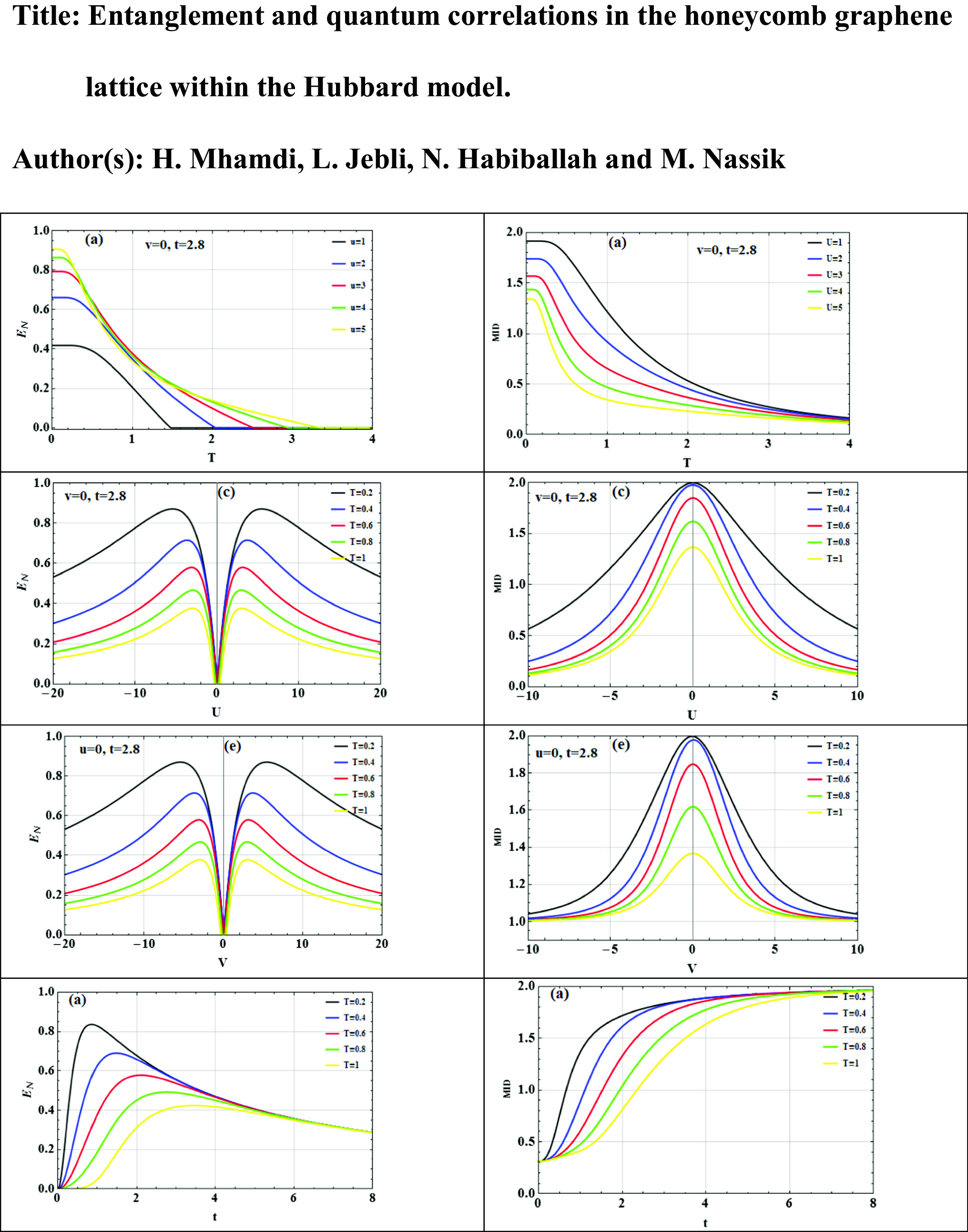https://doi.org/10.1140/epjd/s10053-023-00782-7
Regular Article – Quantum Optics
Entanglement and quantum correlations in the honeycomb graphene lattice within the Hubbard model
1
LPTHE, Department of Physics, Faculty of Sciences, Ibn Zohr University, Agadir, Morocco
2
Department of Applied Physics, Faculty of Applied Sciences, Ibn Zohr University, Ait-Melloul, Morocco
3
Abdus Salam International Centre for Theoretical Physics, Trieste, Italy
Received:
3
April
2023
Accepted:
6
November
2023
Published online:
5
January
2024
In this paper, we study the quantum correlations, particularly entanglement, between two qubits in graphene lattices. This study considers the short-range electron–electron Coulomb interactions as introduced by the Hubbard model and examines entanglement and other quantum correlations using the logarithmic negativity  and the measurement-induced disturbance (MID) quantifiers, respectively. The results show that the on-site repulsion U, the nearest-neighbor interaction V between two qubits can promote entanglement up to a certain limit of U and V, but beyond entanglement, they can destroy other quantum correlations. These parameters can be seen as potentials generated near the two qubits, and they have a significant impact role in determining the amount and nature of quantum correlations in the system. Additionally, we have noted that the temperature T and the hopping parameter t also affect the quantum correlations in the system. Moreover, we found that MID is more robust than
and the measurement-induced disturbance (MID) quantifiers, respectively. The results show that the on-site repulsion U, the nearest-neighbor interaction V between two qubits can promote entanglement up to a certain limit of U and V, but beyond entanglement, they can destroy other quantum correlations. These parameters can be seen as potentials generated near the two qubits, and they have a significant impact role in determining the amount and nature of quantum correlations in the system. Additionally, we have noted that the temperature T and the hopping parameter t also affect the quantum correlations in the system. Moreover, we found that MID is more robust than  . That is means that even when there is no entanglement present, quantum correlations are still present in the interacting two-qubit states, which can be detected by MID quantifier.
. That is means that even when there is no entanglement present, quantum correlations are still present in the interacting two-qubit states, which can be detected by MID quantifier.
Copyright comment Springer Nature or its licensor (e.g. a society or other partner) holds exclusive rights to this article under a publishing agreement with the author(s) or other rightsholder(s); author self-archiving of the accepted manuscript version of this article is solely governed by the terms of such publishing agreement and applicable law.
© The Author(s), under exclusive licence to EDP Sciences, SIF and Springer-Verlag GmbH Germany, part of Springer Nature 2024. Springer Nature or its licensor (e.g. a society or other partner) holds exclusive rights to this article under a publishing agreement with the author(s) or other rightsholder(s); author self-archiving of the accepted manuscript version of this article is solely governed by the terms of such publishing agreement and applicable law.





